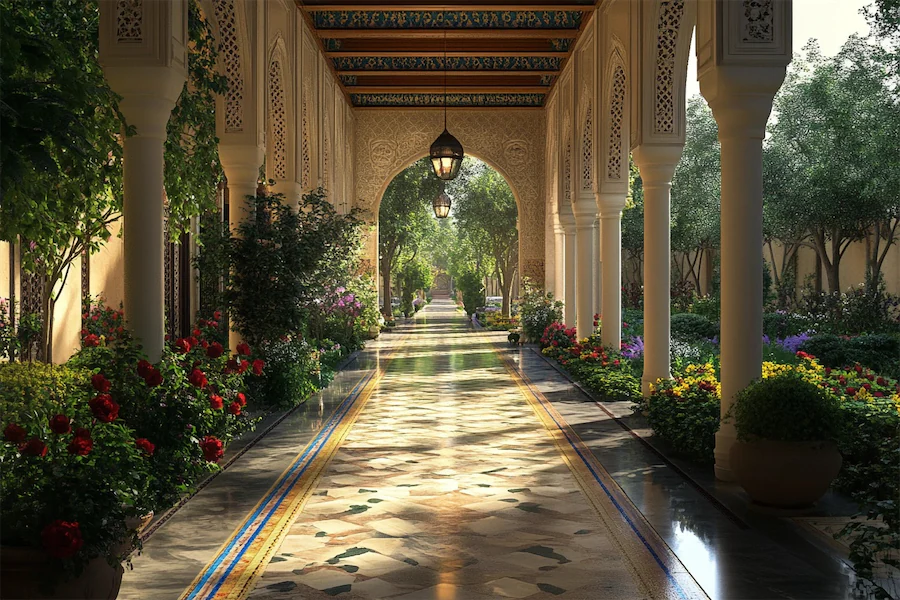A Persian Paradise Garden, known as “Bagh” in Persian, is a meticulously designed space that embodies the concept of paradise on earth. These gardens are characterized by their symmetrical layouts, water features, and lush vegetation, creating a serene environment for reflection and relaxation.
History and Origins of Persian Paradise Gardens
The tradition of Persian gardens dates back to the Achaemenid Empire (circa 550–330 BCE), with early examples found in Pasargadae and Susa. The term “paradise” itself is derived from the ancient Persian word “pairidaeza,” meaning “walled enclosure.” These gardens were designed to represent an earthly reflection of the Islamic vision of paradise, featuring four quadrants divided by water channels, symbolizing the four rivers of Eden.
Key Features of Persian Paradise Gardens
- Chahar Bagh Layout: A quintessential feature is the “Chahar Bagh” (four-part) design, dividing the garden into four sections with axial pathways or water channels intersecting at the center. This layout symbolizes the Zoroastrian elements of sky, earth, water, and plants.
- Water Elements: Water plays a central role, with features like fountains, pools, and streams providing aesthetic appeal and cooling effects in arid climates. The sound and sight of flowing water enhance the tranquil atmosphere.
- Enclosing Walls: High walls surround the garden, creating a secluded sanctuary that separates the lush interior from the harsh external environment, embodying the concept of an oasis.
- Lush Vegetation: Despite the arid climate, Persian gardens feature a variety of plants, including fruit trees, flowers, and aromatic herbs, symbolizing fertility and abundance. Cypress trees often represent eternity, while fruit trees signify life and generosity.
Applications of Persian Paradise Gardens
- Cultural Heritage Sites: Many historic Persian gardens, such as the Eram Garden in Shiraz and the Fin Garden in Kashan, are UNESCO World Heritage sites, attracting visitors worldwide to experience their beauty and historical significance.
- Modern Landscaping: The principles of Persian garden design influence contemporary landscaping, promoting sustainable practices like water conservation through efficient irrigation and the use of drought-resistant plants.
Considerations When Creating a Persian Paradise Garden
- Climate Adaptation: Selecting plant species that thrive in the local climate is crucial. Incorporating native, drought-tolerant plants ensures sustainability and reduces maintenance.
- Water Management: Implementing efficient water features and irrigation systems is essential, especially in arid regions, to maintain the garden’s vitality without excessive water use.
- Cultural Sensitivity: Understanding the symbolic meanings behind design elements can enrich the garden’s authenticity and connection to Persian cultural heritage.
Conclusion
Persian Paradise Gardens are timeless embodiments of beauty, harmony, and cultural expression. By integrating architectural elements, water features, and lush plantings within a structured layout, these gardens create a microcosm of paradise, offering a peaceful retreat that continues to inspire garden design around the world.
